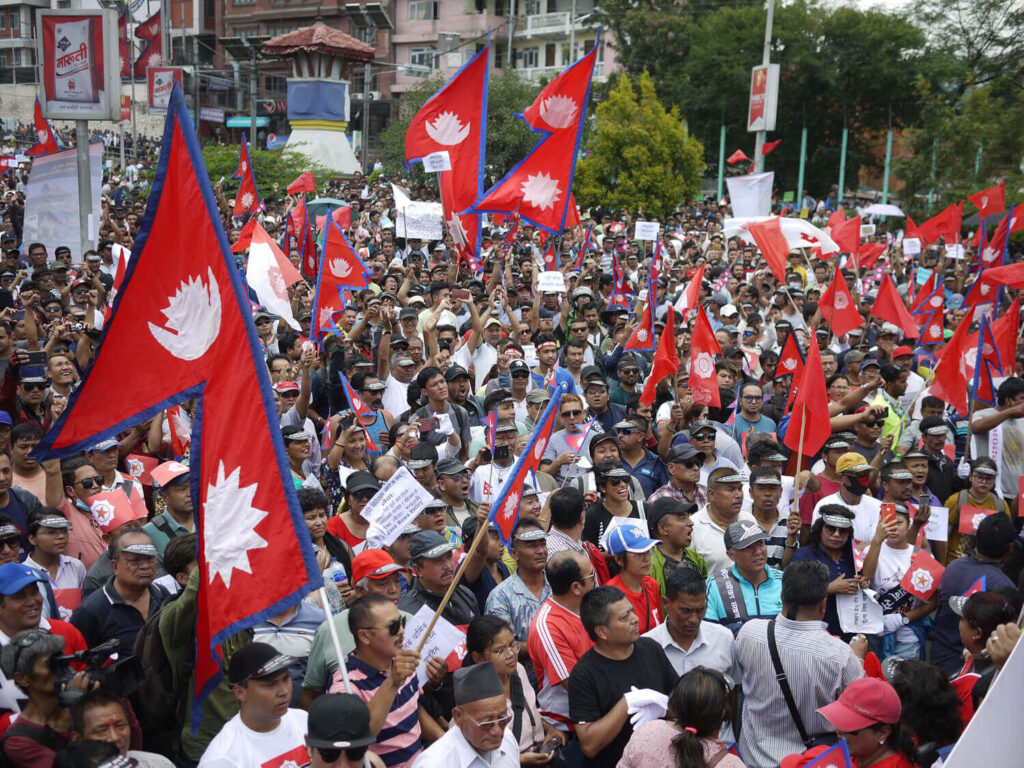Nepal’s Political Crisis: Can Stability Ever Return?
For the past 17 years, Nepal has been grappling with an endless cycle of political instability. Since the abolition of the monarchy in 2008, no Prime Minister has been able to complete a full term, leaving the nation in a continuous state of uncertainty. Today, the country is again at a crossroads as violent protests erupt on the streets, fueled by unemployment, inflation, and public discontent. The big question remains: how will Nepal come out of this crisis?
India’s Concerns over Nepal’s Instability
Nepal’s fragile political environment is not just a domestic concern—it deeply affects India as well. The Indian Ministry of External Affairs has been closely monitoring the developments, as instability in Nepal directly impacts bilateral relations, border security, trade, and regional peace. Veteran foreign affairs journalist Ranjit Kumar points out that for the past two years, “there has hardly been any positive news from Nepal.” The growing unrest and dissatisfaction among citizens are alarming signs that cannot be ignored by India or the international community.
A Country Trapped in Repeated Crises
The situation in Nepal worsened after global energy security issues intensified following the Japan-Russia conflict, adding more pressure to its already struggling economy. Street protests in Kathmandu and other cities reflect years of frustration that have now reached their peak. Citizens are demanding accountability, better governance, and relief from unemployment and inflation.
According to locals like Santosh Kumar Birhe from Kathmandu, the anger of the people was bound to erupt sooner or later. Rising youth unemployment, lack of domestic job opportunities, and heavy reliance on foreign employment markets after COVID-19 have created deep frustration. Inflation has further eroded public trust in the government, while students and young professionals are turning to protests as their only means of expression.
Political Divide and Return of Monarchy Sentiments
Discontent with the current government, led by Prime Minister KP Sharma Oli, is widespread. Many Nepalese believe that leaders are more focused on internal party rivalries than on solving real issues. A section of the population is now even expressing nostalgia for the monarchy, with some voices calling for Nepal to once again become a Hindu nation.
The fragile alliance between the CPN-UML and CPN-Maoist Centre has only deepened instability. Leaders like KP Sharma Oli and Pushpa Kamal Dahal ‘Prachanda’ have failed to maintain unity, further shaking public confidence in the political system.
Seventeen Years Without a Stable Government
Since 2008, every government in Nepal has struggled to complete its tenure. Prachanda, the first Prime Minister after the monarchy ended, resigned before finishing his term. Since then, successive governments have collapsed under pressure, and now Oli’s administration too is facing mounting unrest. According to eyewitnesses like Anmol Bhattarai, the army has been deployed in the streets of Kathmandu, signaling how serious the crisis has become.
A former Indian ambassador to Nepal, speaking anonymously, noted that the situation is “slowly slipping out of the control of the local administration.” Without unity among democratic forces, monarchy supporters and conservative groups are regaining strength. This is reshaping Nepal’s political landscape in unpredictable ways.
The Real Issues: Development, Jobs, and Public Trust
Political analyst Gautam Ghimire stresses that the real crisis lies not in ideology but in governance. The people want better education, jobs, infrastructure, and relief from inflation. Instead, governments keep shifting focus to the constitution, monarchy debates, or party infighting, leaving development on the back seat. This cycle has fueled economic stress, poverty, and loss of public trust in democracy itself.
Is There a Way Forward?
Experts agree that Nepal’s path to stability will not be easy. According to Ghimire, “there is no bloody revolution in democracy—the people protest, they vote, and the government must respond.” Yet, with mounting protests, growing calls for Oli’s resignation, and increasing deployment of security forces, Nepal’s democratic institutions are under severe strain.
Ranjit Kumar believes that the unrest may continue for some days, possibly even escalating, but eventually, the government will need to either announce major reforms or face leadership change. The Nepalese government has already taken steps like announcing restrictions on social media and setting up a special investigation committee to address recent incidents.
Conclusion
Nepal today stands at a turning point. The failure of every government for 17 years has created a deep trust deficit between citizens and political leaders. Unless concrete steps are taken to generate employment, control inflation, and ensure political unity, the cycle of crisis will continue. The current protests, led by frustrated youth, are a warning sign that Nepal’s democracy cannot survive on fragile coalitions alone—it needs stability, accountability, and real development.
